Est une batterie de 10 kW suffisante pour faire fonctionner une maison?
Lorsque vous explorez le stockage d'énergie à domicile, L'une des premières questions concerne toujours la taille et la capacité. Vous voyez des chiffres comme "10kw" et se demande, "Est-ce suffisant pour courir ma maison lors d'une panne de courant?" C'est une question cruciale, Et la réponse dépend de ce que vous voulez alimenter et de combien de temps.
D'abord, clarifions un terme clé. L'alimentation d'une batterie est en kilowatts (kW), Mais sa capacité de stockage d'énergie est en kilowattheures (kWh). Quand les gens posent des questions sur une "batterie de 10 kW" pour l'exécution, Ils signifient presque toujours une batterie de 10 kWh. Une batterie de 10 kWh est souvent suffisante pour faire fonctionner les charges essentielles d'une maison - comme les lumières, réfrigérateur, et Internet - pendant plusieurs heures ou pendant la nuit. Cependant, Il ne suffit généralement pas de gérer une maison entière, surtout avec des charges lourdes comme la climatisation haute puissance, pendant une période prolongée.
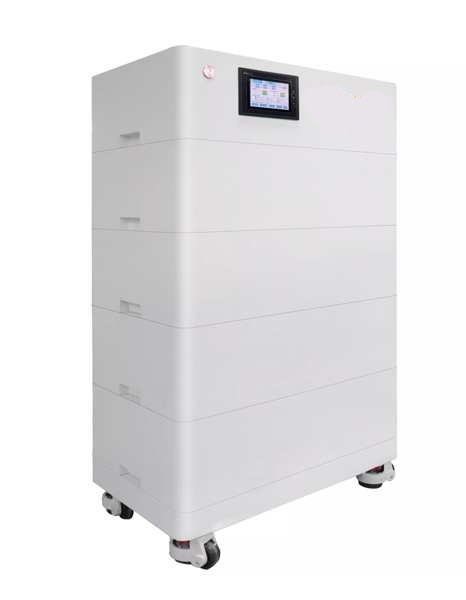
À Gycx Solaire, Nous nous spécialisons dans la conception batterie domestique empilable systèmes parfaitement dimensionnés pour les besoins de nos clients, que ce soit pour une sauvegarde essentielle pendant un typhon ou pour maximiser les économies d'énergie solaire. Plongeons-nous dans les détails.
Que sont les piles empilées?
Vous entendrez souvent des solutions de stockage d'énergie modernes appelées "empilées" ou "empilable" batteries. Qu'est-ce que cela signifie, Et en quoi est-ce différent d'un seul, batterie autonome?
Batteries empilées, ou "batteries empilables," Les unités de stockage d'énergie modulaires sont-elles spécifiquement conçues pour être placées physiquement et interconnectées électriquement pour former un plus grand, Banque de batterie unifiée. Chaque module est une batterie autonome (Souvent en utilisant la chimie du lithium LFP en toute sécurité avec son propre BMS) qui agit comme un élément de construction. Cette conception vous permet de mettre à l'échelle facilement la capacité de votre système en ajoutant plus de modules, Création d'une solution énergétique personnalisée et à l'épreuve du futur.
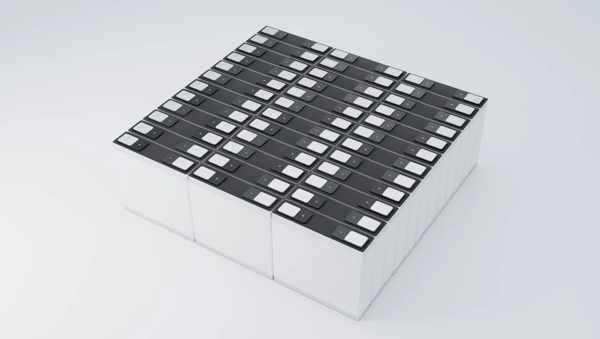
Plonger plus profondément: La puissance de la conception modulaire
Le concept de batterie domestique empilable est construit sur plusieurs principes clés:
- Modularité: Chaque unité de batterie est un module standardisé (Par exemple, 5kWh). Cela vous permet de commencer par la capacité dont vous avez besoin maintenant et d'ajouter plus tard.
- Évolutivité: C'est le principal avantage. Si vous achetez un véhicule électrique à l'avenir, Vous pouvez simplement ajouter un autre module de batterie à votre pile au lieu de remplacer l'ensemble du système.
- Conçu pour la sécurité: Ces modules sont conçus avec des fonctionnalités pour l'empilement physique sécurisé (comme des boîtes de verrouillage ou un montage à rack) et ont protégé les bornes pour une connexion électrique sûre.
- Intégration intelligente: Chaque module a son propre système de gestion de batterie (GTC), et ils sont conçus pour communiquer entre eux et votre onduleur solaire pour fonctionner comme un seul, intelligent, et banque de batterie très efficace.
Cette approche, que nous utilisons à Gycx Solar, Fournit à nos clients un chemin flexible et rentable vers l'indépendance de l'énergie.
Combien de temps durera une batterie de 15 kWh?
Comprendre l'exécution est la clé pour dimensionner votre batterie. Si une batterie de 10 kWh ne suffit pas pour toute une maison, Combien de temps plus une batterie de 15 kWh plus grande?
UN 15Magasins de batterie KWh 50% Plus d'énergie qu'une batterie de 10 kWh, Alors ça durera 50% plus long Tout en alimentant les mêmes charges ménagères. Par exemple, Si une collection d'appareils essentiels dessinait 500 watts drainerait une batterie de 10 kWh dans environ 20 heures, Cette même charge serait alimentée par une batterie de 15 kWh pour approximativement 30 heures.
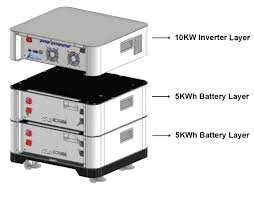
Plonger plus profondément: Une comparaison pratique
Regardons les mathématiques avec des charges ménagères courantes en Corée du Sud:
La formule: Temps d'exécution (Heures) = Capacité de la batterie (en wh) / Charger (en watts)
- Une batterie de 10 kWh = 10,000 Wh
- Une batterie de 15 kWh = 15,000 Wh
| Scénario | Charge moyenne | 10KWh Runtime de batterie | 15KWh Runtime de batterie |
|---|---|---|---|
| Essentials uniquement (Réfrigérateur, lumières, Wi-Fi, TV) | 500 Watts | ~ 20 heures | ~ 30 heures |
| Utilisation modérée (Essentiel + Cuiseur à riz, PC de bureau) | 1,500 Watts | ~ 6,7 heures | ~ 10 heures |
| À forte utilisation (Essentiel + un climatiseur à une pièce) | 2,500 Watts | ~ 4 heures | ~ 6 heures |
Comme vous pouvez le voir, Cette capacité supplémentaire de 5 kWh dans un système de 15 kWh fait une différence significative. Il peut s'agir de la marge dont vous avez besoin pour faire fonctionner votre climatiseur pendant quelques heures confortables lors d'une chaude panne de nuit d'été ou vous offrir une journée de sécurité supplémentaire. Dimensionner avec un batterie domestique empilable Le système est facile - il est souvent aussi simple que d'ajouter un module de plus.
Les batteries de pile d'alimentation en valent-elles la peine?
Investit dans un modulaire, Système de batterie empilable - une «pile d'alimentation» - une décision financière intelligente? Le bénéfice d'avoir cette puissance de sauvegarde évolutive et le stockage solaire justifient le coût?
Oui, Pour la plupart des propriétaires, Un système de batterie empilable est un excellent investissement. La valeur provient de trois domaines clés:
- Épargne financière: En stockant l'excès d'énergie solaire à utiliser pendant les heures de pointe du soir, Vous pouvez réduire considérablement vos factures d'électricité de fournisseurs comme Kepco.
- Sécurité énergétique: Il fournit une tranquillité d'esprit inestimable et un pouvoir de sauvegarde transparent lors des pannes causées par des typhons ou d'autres problèmes de grille.
- Flexibilité à l'épreuve de l'avenir: La possibilité d'ajouter facilement plus de capacité protège plus tard votre investissement initial et permet au système de s'adapter à vos besoins énergétiques changeants.
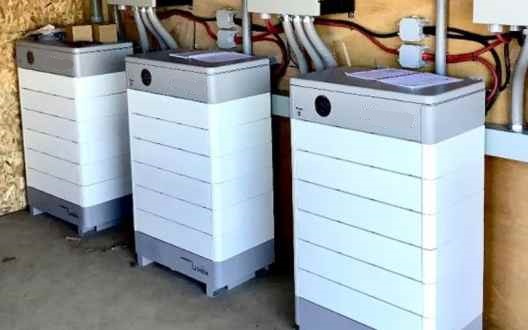
Plonger plus profondément: Le retour sur investissement
Regardons la proposition de valeur:
- Réduction des factures: Une batterie vous permet de maximiser "l'auto-cohésion solaire." Au lieu de vendre votre excès d'énergie solaire au réseau, vous le stockez et l'utilisez-vous vous-même lorsque l'électricité est la plus chère. Ce décalage direct est le moyen le plus rapide de voir un retour sur votre investissement solaire et de batterie.
- Alimentation de secours: Quel est le coût d'une panne de courant? Pour une famille, Cela pourrait signifier des aliments gâtés, pas de lumières, Et pas Internet. Pour quelqu'un qui travaille à la maison, Cela signifie une perte de productivité. Une batterie fournit sans couture, silencieux, et alimentation automatique au moment où la grille échoue.
- Évolutivité: Ceci est un avantage unique de la conception empilable. Vous n'avez pas à acheter un énorme, Système surdimensionné aujourd'hui. Vous pouvez commencer avec un système de 10 kWh et, Si vous achetez plus tard un véhicule électrique ou installez un climatiseur, Vous pouvez simplement avoir un professionnel ajouter un autre module de 5 kWh ou 10 kWh. Cela rend le stockage d'énergie plus accessible et adaptable.
Gycx Solar Story: "Un client à Séoul hésitait au coût d'une grande batterie. Nous avons installé un système empilable de 10 kWh de démarreur. Un an plus tard, Ils ont acheté un EV. La mise à niveau était simple et rentable - nous avons juste ajouté un deuxième module de 10 kWh à leur configuration existante. Ils aimaient la flexibilité."
Qu'est-ce que le 80 20 Règle pour les batteries au lithium?
Vous avez peut-être entendu parler du "80/20 règle1" pour charger des téléphones ou des ordinateurs portables et s'est demandé si cela s'applique aux grandes batteries de maison. Quelle est cette règle, Et est-ce important pour votre Santé de la batterie2?
La "règle 80/20," plus précisément appelé le "Règle 20-80," est une ligne directrice pour maximiser la durée de vie du cycle de certains types de batteries au lithium-ion. Cela suggère que pour une utilisation quotidienne, Vous devriez essayer de garder l'état de charge de la batterie entre 20% et 80%. Éviter les extrêmes d'un plein 100% charge et un profond 0% La décharge peut réduire le stress sur la batterie et l'aider à durer plus longtemps.
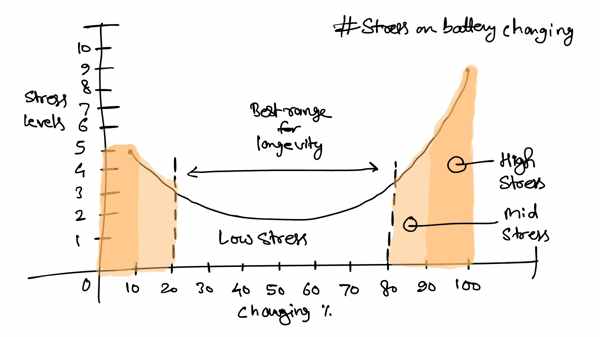
Plonger plus profondément: Une meilleure pratique pour la longévité de la batterie
Voici un examen plus approfondi de la règle et de la façon dont elle s'applique à un batterie domestique empilable:
- Pourquoi ça marche: Les batteries au lithium-ion éprouvent le stress le plus chimique et mécanique lorsqu'ils sont à très haute ou très faible tension, qui correspond à être presque plein ou presque vide. Opérant dans le "Sweet Spot" Au milieu est plus doux sur les composants internes, conduisant à une durée de vie globale plus longue.
- Est-ce nécessaire pour LFP? Cette règle est la plus critique pour les chimies comme NMC, qui sont communs dans l'électronique grand public. Le LFP (Phosphate de fer au lithium) La chimie utilisée dans les meilleurs systèmes de batterie domestique est beaucoup plus robuste et tolérante d'être chargé 100%. Cependant, Le principe sous-jacent que les cycles moins profonds sont moins stressants que les cycles plus profonds tient toujours.
- Comment les systèmes modernes le gèrent: La bonne nouvelle est que vous n'avez pas à gérer cela manuellement! Un BESS moderne de GYCX Solar vous permet de programmer ces limites directement dans le logiciel du système. Un cadre commun et très efficace est:
- Définir une réserve de sauvegarde: Vous pouvez dire au système, "Ne jamais décharger en dessous 20% Pendant une utilisation quotidienne normale; sauf que 20% pour une panne de courant." Cela empêche automatiquement les décharges quotidiennes profondes et garantit que vous avez toujours une réserve de puissance.
- Le système va ensuite faire du vélo entre votre réserve (Par exemple, 20%) et 100% tous les jours, qui est parfaitement sûr et normal pour les batteries LFP durables. Cela vous donne le meilleur des deux mondes: Utilisation maximale de votre énergie solaire et d'une réserve de sauvegarde protégée, Tout en faisant la promotion d'une vie longue et saine pour votre batterie.
Une batterie de 10 kWh est un point de départ puissant pour le stockage d'énergie domestique, Mais son véritable potentiel est déverrouillé dans un modulaire, batterie domestique empilable système. Cette approche offre parfaitement la flexibilité de la taille de votre système, La sécurité de la technologie LFP durable, et la valeur d'un investissement à l'épreuve du futur. En comprenant les meilleures pratiques comme le 20-80 règle3, Vous pouvez vous assurer que votre système vous sert de manière fiable pour les années à venir.
Si vous avez plus de questions sur le dimensionnement d'une batterie pour votre maison ou si vous souhaitez explorer les avantages d'un système évolutif, Notre équipe d'experts de GYCX Solar est là pour aider. Contactez-nous pour une consultation professionnelle!
Comprendre le 80/20 La règle peut vous aider à optimiser la durée de vie et les performances de votre batterie. ↩
L'exploration des conseils d'entretien de la santé des batteries peut prolonger considérablement la durée de vie et l'efficacité de la batterie de votre maison. ↩
Renseignez-vous sur le 20-80 Règle pour optimiser votre utilisation de votre batterie et prolonger efficacement sa durée de vie. ↩
